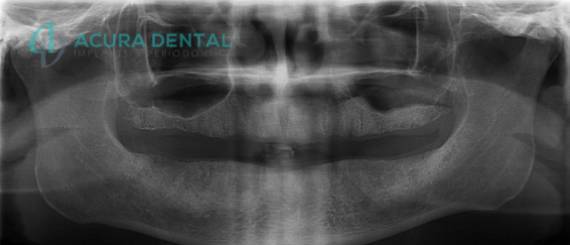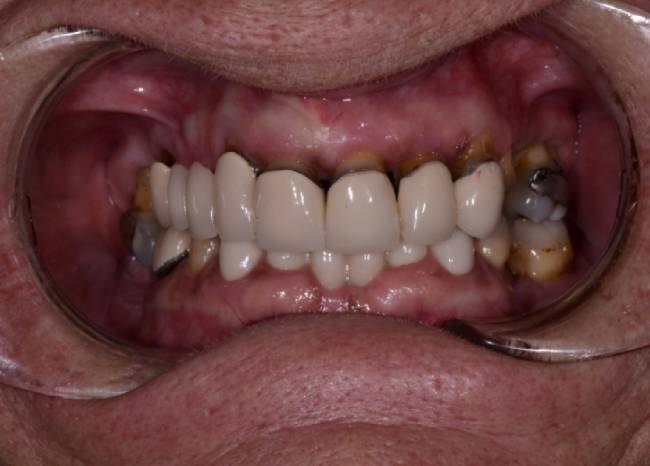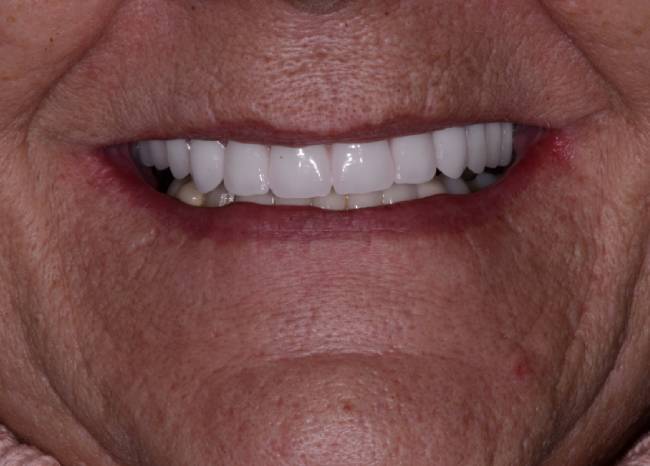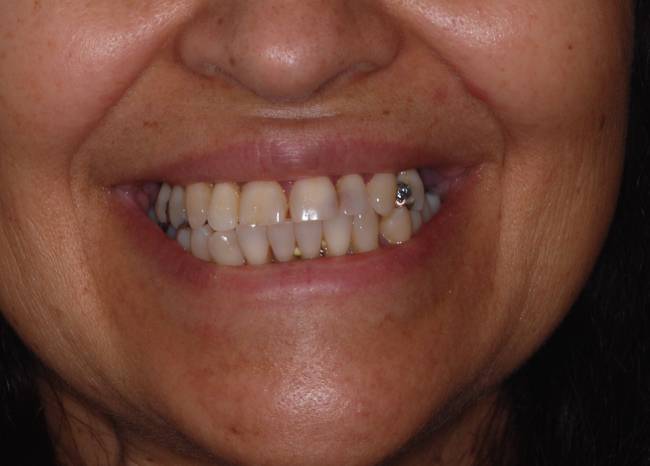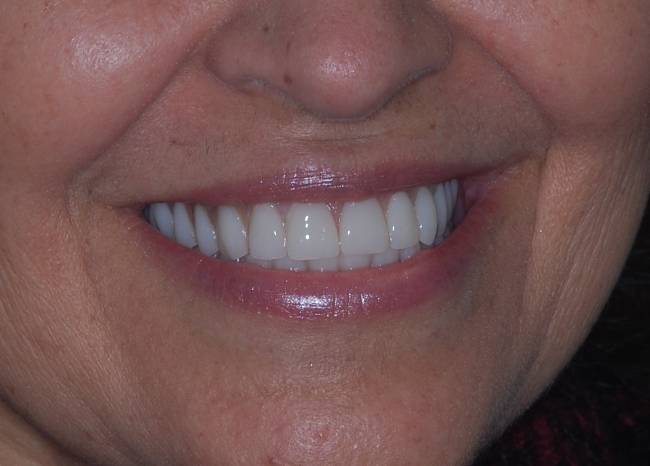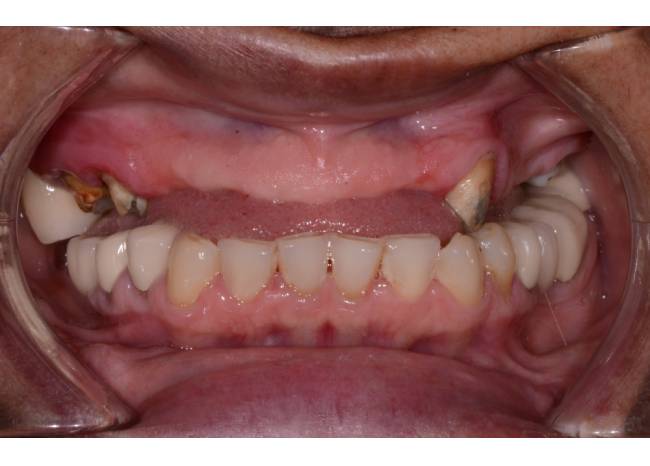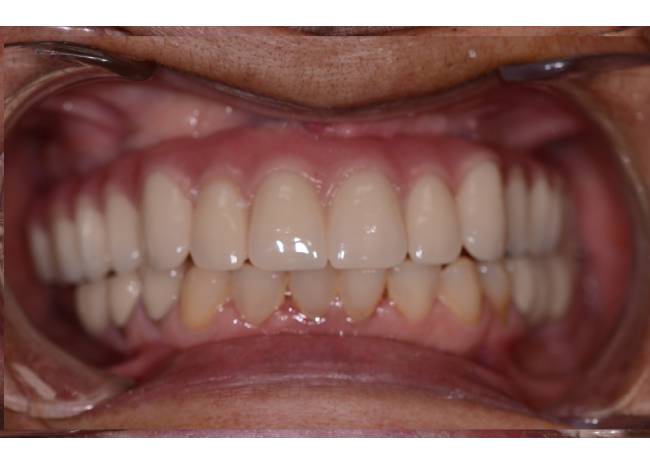Same Day Implants and Teeth
Teeth-in-a- Day/ All-on-4
The technical names for this prosthesis are “hybrid” or “fixed-detachable”. It can be removed by an implant dentist when/if needed, but not by the patient. The popular names are “All-On-4” or “Teeth-in-a-Day”. These are sometimes done with 5 or 6 implants, depending on varying factors in a given patient’s anatomy. This is wildly popular, worldwide. Because of its popularity and potential profit margin there are many under-qualified dentists attempting it. These treatments result in a denture-type prosthesis that attaches (is screwed on) to multiple implants. It can be made of titanium/acrylic or zirconium. Tooth breakage is common if the material choice is wrong or if the patient has a strong bite, clenches or grinds. It is a very good option when done properly with the correct combination of materials. The final result is highly aesthetic, functional and comfortable.
It is a surgical and technique prosthodontics procedure for total rehabilitation of the edentulous patient or for patients with badly broken down teeth, decayed teeth or compromised teeth due to gum disease. It consists of the rehabilitation of either edentulous or dentate maxilla and/or mandible with fixed prosthesis by placing four to six implants. The implants support a fixed prosthesis with 10 to 12 teeth and it is placed immediately, typically within 24 hours of surgery.
The All-on-X treatment concept is a prosthodontic procedure (i.e replacement of missing teeth) that provides a permanent, screw-retained, same-day replacement for the entire upper and / or lower set of teeth with a bridge or denture. The procedure is best for patients with significant tooth loss or decay and for people whose bone loss in the jaw area prevents them from getting conventionally oriented (vertical) dental implants. Often, tooth loss is accompanied by loss of the jaw bone which poses the problem of reconstruction of the jaw bone requiring bone grafting. This technique takes advantage of the dense bone that remains in the front part of the jaws and by placing the two posterior implants on an angle to avoid the sinus cavities in the upper jaw and the nerve canal in the lower jaw. For the implementation to be successful a careful analysis of the bone structure needs to be made. The most ideal way to evaluate the bone is by a CBCT scan.
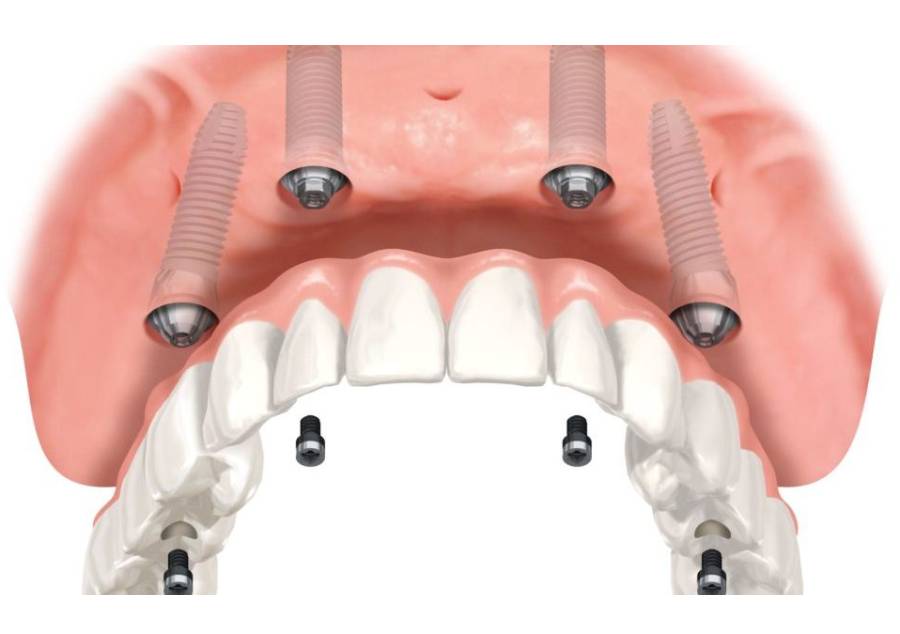
Full mouth implant cases done by Dr. Atassi All-on-4 case
The technique avoids certain anatomical limitations typically seen in the back of the upper and lower jaws. We successfully avoided bone-deficient areas with the use of angulated implants.
